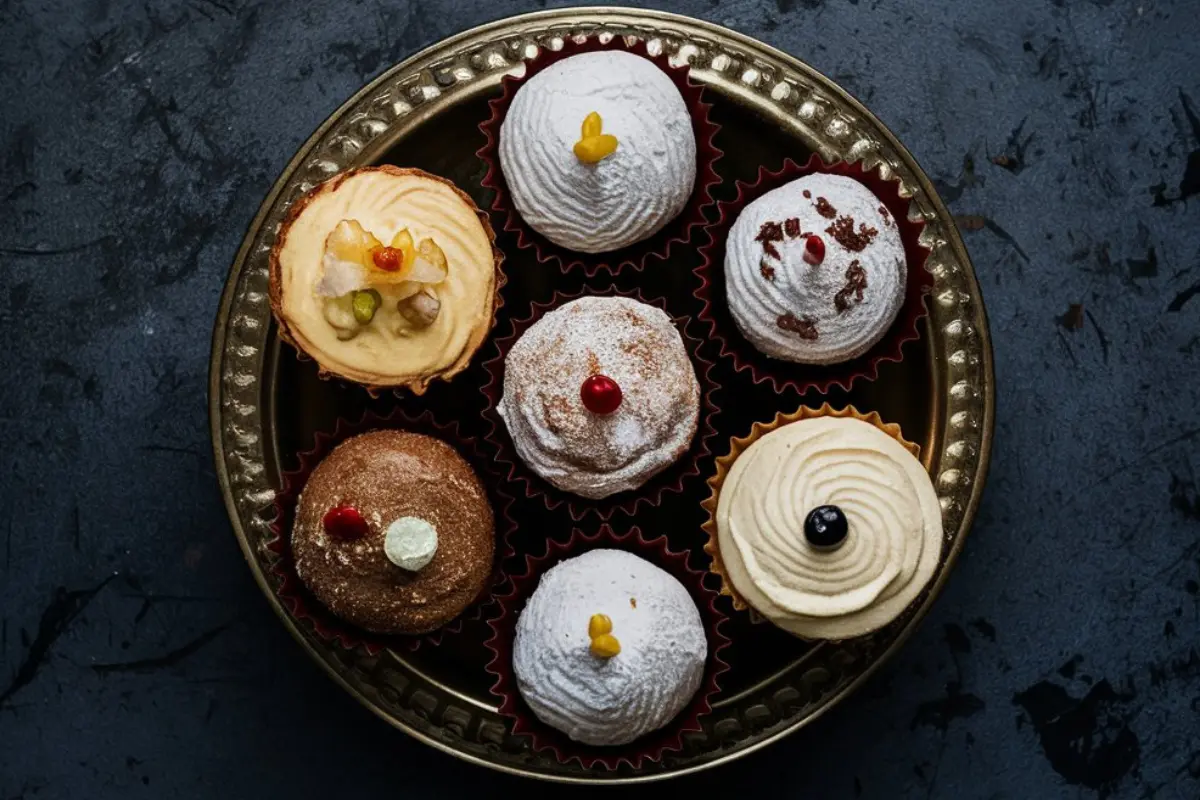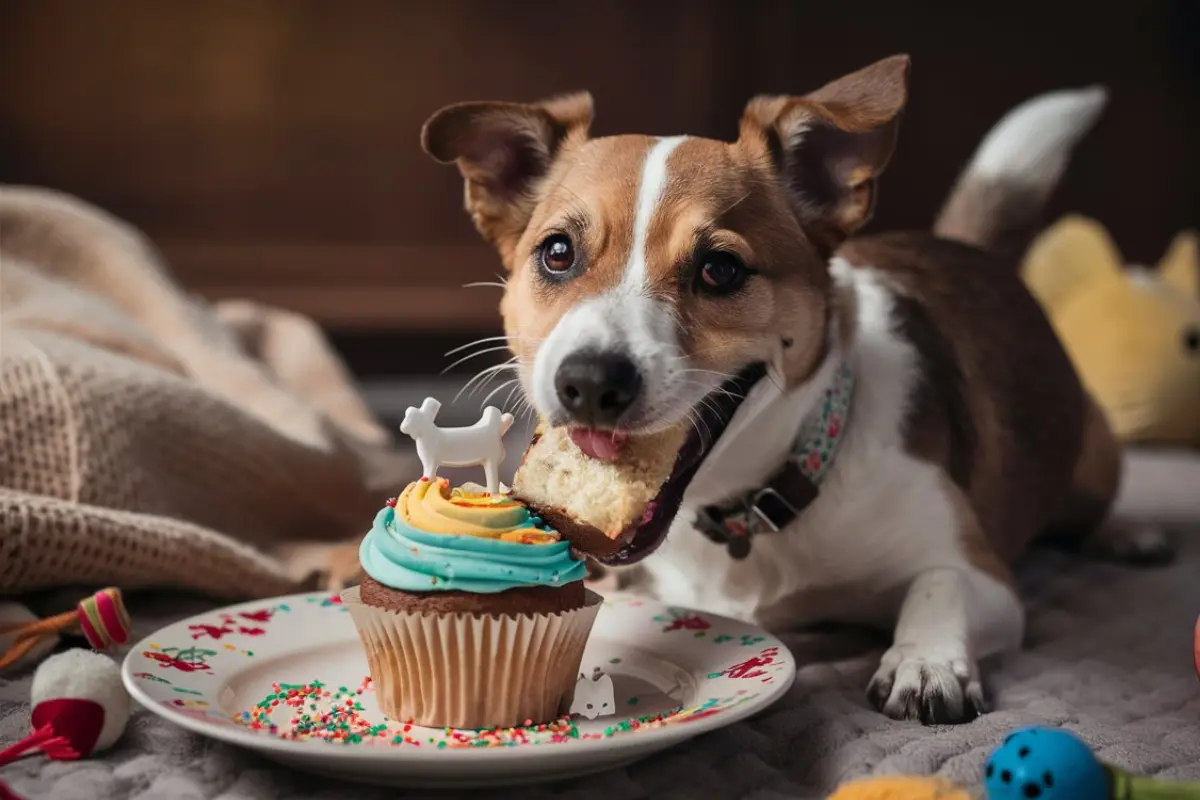When it comes to feeding our furry friends, many dog owners wonder, “Can dogs eat cupcakes?” It’s a common query, especially during celebrations when sweet treats are in abundance. This article delves deep into whether cupcakes are safe for dogs, highlights the potential risks involved, and offers safe alternatives to keep your beloved pet healthy. We’ll cover everything from the harmful ingredients found in typical cupcakes to how you can make dog-friendly versions at home. So, let’s get started on this journey to ensure the safety and happiness of your canine companion.
Understanding the Dietary Needs of Dogs
Overview of Canine Dietary Restrictions
Dogs have specific dietary needs that differ significantly from humans. It’s crucial to recognize that some common human foods can be harmful to them. Cupcakes, for example, contain several ingredients that are not suitable for canine consumption. By understanding what makes these seemingly innocuous treats dangerous, you can prevent potential health issues in your pets.
Risks Associated with Common Cupcake Ingredients
Most cupcakes are packed with sugar, fats, and sometimes even chocolate—all of which pose health risks to dogs. Sugar can cause obesity and dental issues in dogs, similar to its effects on humans. Furthermore, the fat content in cupcakes can cause pancreatitis, a serious condition that can be painful and life-threatening for dogs. Additionally, chocolate is famously toxic to dogs; it contains theobromine and caffeine, which dogs cannot metabolize effectively. For more detailed information on how to select high-quality dog food that is safe and nutritious, consider reading the guidelines at Dog Food Advisor.
You might be thinking, “But my dog has eaten cupcakes in the past and seemed okay!” However, just because a dog does not immediately show symptoms does not mean it’s safe. The effects can be cumulative and might lead to health issues over time.
Moreover, artificial sweeteners like xylitol, commonly found in sugar-free cupcakes, are extremely toxic to dogs. Even tiny quantities can lead to hypoglycemia, liver failure, or even death. Therefore, it’s vital to understand the serious risks these treats pose when pondering the question, “Can dogs eat cupcakes?”
Linking out to PetMD Dog Nutrition, we find that educating ourselves about these risks is the first step toward preventing them. By familiarizing yourself with dog-safe foods and those to avoid, you can ensure your pet remains healthy and happy.
In the next section, we will explore specific ingredients found in cupcakes that are harmful to dogs, helping you to understand exactly why these treats should generally be kept out of reach of your furry friend.
Specific Ingredients and Dog Health
Chocolate in Cupcakes: A Dangerous Delicacy
The presence of chocolate in cupcakes makes them a significant hazard for dogs. Chocolate contains substances known as theobromine and caffeine, which dogs process much slower than humans. Even small amounts of chocolate, especially dark or baking chocolate, can cause symptoms like vomiting, diarrhea, rapid breathing, increased heart rate, and seizures in dogs.
Other Toxic Ingredients to Consider
Aside from chocolate, there are other ingredients often found in cupcakes that are harmful to dogs. For instance, nuts and raisins are common in certain types of cupcakes and can be extremely toxic to your canine. Nuts can cause gastric intestinal distress or pancreatitis, and raisins are known to potentially lead to kidney failure.
Furthermore, some flavorings and additives that make cupcakes so appealing to us can be just as harmful to dogs. For example, artificial sweeteners such as xylitol, which is often used in sugar-free baked goods, can be deadly for dogs. This sweetener can trigger a rapid release of insulin in dogs, leading to dangerously low blood sugar levels.
By being aware of these harmful ingredients, dog owners can take proactive steps to ensure their pets are not accidentally exposed to these risks. Always be vigilant about keeping such treats away from your pets, and educate others in your household about these dangers. Indeed, a little precaution goes a long way in keeping your beloved pet safe and healthy.
In the next part of our exploration into the query “Can dogs eat cupcakes?”, we’ll look into some real-life examples and professional advice from veterinarians on this matter.
Case Studies and Veterinary Advice
Incidents of Dogs Eating Cupcakes
Throughout veterinary practice, there have been numerous cases where dogs have ingested cupcakes, often leading to urgent medical consultations. These incidents vary in severity but commonly include symptoms such as gastrointestinal upset, lethargy, and more severe reactions linked to toxic ingredients like chocolate and xylitol.
One notable case involved a Labrador Retriever who consumed a batch of homemade chocolate cupcakes. The dog exhibited symptoms of chocolate poisoning and required immediate veterinary intervention to manage theobromine toxicity. This case underscores the importance of keeping such tempting treats out of your dog’s reach.
Expert Opinions on Cupcake Consumption in Dogs
Veterinarians universally advise against feeding cupcakes to dogs, primarily due to the toxic ingredients they often contain. Dr. Julie, a veterinarian with over a decade of experience, emphasizes, “The risks associated with feeding dogs cupcakes can range from minor digestive upset to life-threatening conditions. It’s best to err on the side of caution and avoid giving any human desserts to dogs.”
Veterinary experts also recommend that dog owners keep an emergency plan ready. Knowing the contact information of your nearest vet or animal poison control center can make a significant difference in the outcome of accidental ingestion incidents.
Furthermore, during consultations, veterinarians often highlight alternative treat options that are safe for dogs. This guidance is crucial for owners who wish to pamper their pets safely. By consulting a professional, you can ensure that the treats you provide are not only enjoyable for your dog but also beneficial for their health.
In the following section, we will delve into some safe alternatives to cupcakes for dogs. We’ll explore how you can still treat your dog with delicious snacks without compromising their health.
Safe Alternatives and Homemade Recipes
Safe Ingredients for Dogs
When it comes to feeding your pet, there are plenty of options that are safe and healthy for cupcakes you can make at your home. Ingredients like carrots, Apples (without seeds) pumpkin, peanut butter (without xylitol) are not just suitable for dogs, but they can also favor vital nutrients and fibers which contribute to overall well-being.
Homemade Cupcake Recipes for Dogs
If you love baking with their dogs making cupcakes at home that are safe for your pet is an excellent way to show affection towards your pet. Here’s a recipe you can attempt:
Pumpkin Peanut Butter Dog Cupcakes
Ingredients:
-
- 1 cup of oat flour
- A quarter cup of peanut butter (xylitol-free)
- 1/4 cup puree of pumpkin (not pie stuffing)
- 1 egg
- 1 teaspoon baking soda
- As much water as is needed
Instructions:
- Pre-heat your oven at 350degreesF (175degC).
- Blend all ingredients together in the bowl until they are well-combined. If the mix appears too dense, you can add a bit of water to attain an akin to batter consistency.
- Pour the mix into cupcake molds, or into a greased muffin pan.
- Bake for about 15 to 20 minutes, or till a toothpick inserted in the center is clear.
- Cool it completely before giving it out to the pet.
For more insights on the potential risks and safe alternatives when considering sweet treats for your dogs, check out the detailed guide on whether dogs can safely eat pound cake at Can Dogs Eat Pound Cake? Risks and Safe Alternatives.
Banana Yogurt Dog Cupcakes
Ingredients:
-
- 2 ripe bananas, mashed
- 1/4 cup plain yogurt (ensure it’s xylitol-free and non-fat)
- 1/2 cup whole wheat flour
- 1 egg
- 1 tsp baking powder
Instructions:
-
- Preheat your oven to 350°F (175°C).
- In a bowl, thoroughly mix the mashed bananas and yogurt.
- Add the flour, egg, and baking powder to the banana-yogurt mixture and stir until combined.
- Scoop the mixture into greased muffin tins or silicone cupcake molds.
- Bake for 20-25 minutes or until they are firm and lightly browned on top.
- Let the cupcakes cool completely before giving them to your dog.
These recipes are tailored to be both enjoyable and nutritious for dogs, avoiding any ingredients that could pose a risk to their health. For dog owners interested in providing homemade treats, these recipes offer a great way to ensure that your dog can join in on snack time safely.
By incorporating safe, healthy alternatives into your dog’s diet, you help ensure they receive the nutrients they need while avoiding the risks associated with human desserts like cupcakes.
In addition to homemade recipes, there are commercially available dog treats that are formulated to be safe and nutritious. Choosing high-quality commercial treats can also be a convenient way to keep your dog happy and healthy.
In the next part, we will discuss techniques and strategies for preventing your dog from accessing unsafe foods, focusing on training and household safety measures. This proactive approach helps ensure that your pet remains safe from potentially harmful human foods.


